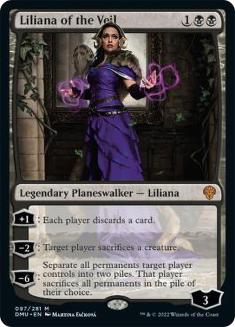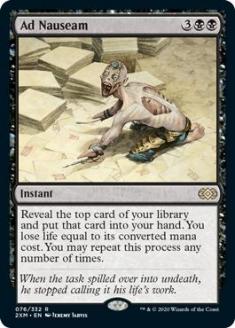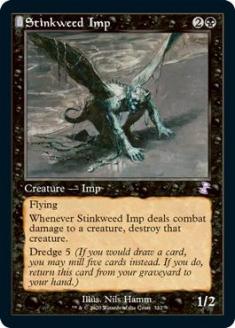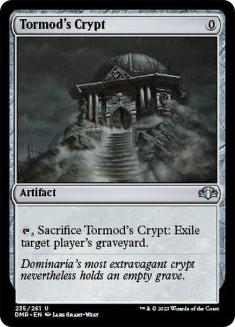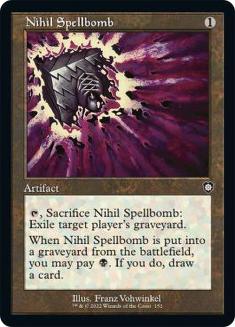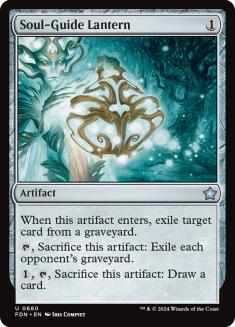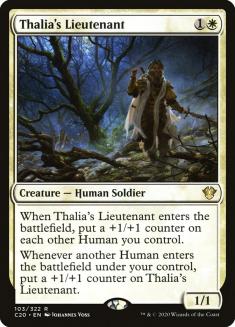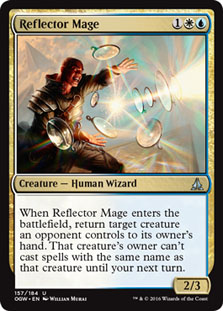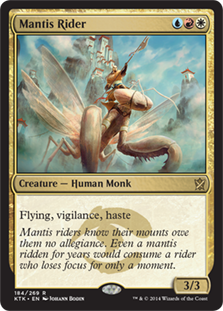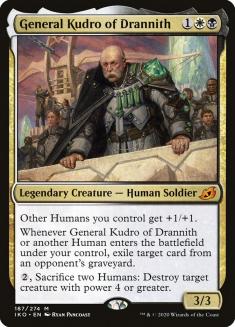There was a ton of speculation on how the companion mechanic would change yesterday, but I don’t think anyone expected such a clunky revision. Companions now cost three mana to put into your hand. Three mana that you pay as a special action, but at sorcery speed. Strange to say the least.
You can read my detailed thoughts in yesterday’s Fact or Fiction article, but suffice it to say that I’m disappointed. That said, it does no good to sulk in my disappointment. As a professional Magic player, my job is to take the metagame that we’re given and do my best to succeed under those parameters.
To that end, it’s clear that this is a significant nerf on a set of cards that have dominated Magic since they were printed two months ago. That means significant changes are coming to every competitive format. Today I will focus on Modern, as I think it will be the most affected by the companion mechanic. Despite a significant number of non-companion decks having success, the metagame was entirely driven by the companion decks at the top, namely Lurrus of the Dream-Den and Yorion, Sky Nomad.
Modern will be very different two weeks from now, and in any time of great flux there is great opportunity. The next week or two will be a time when players are testing new ideas and tuning rough brews before we determine what the driving forces of the new metagame will be. Players who find the best strategies and tune them quickly will maintain a huge advantage over the rest of the field until we reach an equilibrium, so now is the time to put in work.
To that end, I’ve identified five cards and decks whose stock in the format I believe will drastically change over the next two weeks — some for better, some for worse.
Loser: Lurrus of the Dream-Den
I’m starting with the biggest loser, which has been the most dominant companion in larger formats and particularly good in Modern due to its synergy with Mishra’s Bauble. This synergy allowed Lurrus to flourish in aggressive strategies as well as controlling strategies, which used the Cat Nightmare as a powerful card advantage engine even if they had few threats to recur.
But the key to Lurrus’s power, beyond being a free extra card, is how efficient it was. Modern is a fast format, and establishing card advantage with Lurrus and Bauble on Turn 3 or recurring a Monastery Swiftspear on Turn 4 to keep the pressure on gave these decks resilience against interactive strategies while maintaining the speed necessary to compete against the metagame’s many linear strategies. Adding three mana to the cost of Lurrus is huge because it strikes at the heart of the advantage that Lurrus had over all the other companions.
Also, these decks gained an advantage on the rest of the metagame because they could afford to play low land counts because of their relatively low curves. That means paying the extra cost in one turn is virtually impossible. Your only option is to take a full turn off to access the Lurrus from your sideboard before you can deploy it.
This not only slows you down significantly, it allows your opponent a full turn to set up their response. Proactive decks rely on their ability to apply consistent pressure so that their opponents don’t have the time to properly set up their defenses. If companions are still powerful enough to make some impact on Modern, then they will likely be doing so out of reactive strategies loaded with enough cheap interaction that taking a turn off to acquire their companion isn’t too great a cost.
Those decks will mostly be interested in Yorion, Sky Nomad, the other top-tier companion, which seems to take the least hit from the errata. Modern has been a battle between Lurrus decks, Yorion decks, and non-companion decks for weeks, and it’s clear that the Lurrus decks are taking the biggest hit right now.
Winner: Liliana of the Veil
With Lurrus taking a significant hit, the next step is to look at the cards that Lurrus decks weren’t playing in order to take advantage of the powerful companion. At the top of that list is Liliana of the Veil, which was formerly a staple in black-based midrange decks but has been unplayable since Ikoria‘s release.
But if the decks that survive this errata largely intact are Yorion midrange decks and linear, non-companion decks, Liliana will be a powerful tool again. Limiting these decks’ total resources makes it much more difficult for those decks to operate. If they discard too many lands, they won’t be able to deploy their cards effectively, and if they discard too many spells, they won’t have enough relevant cards to execute their strategy.
This plan can fall victim to a Yorion which draws three or more cards by blinking Arcum’s Astrolabe, Ice-Fang Coatl, and the like, but it’s much more difficult to cast Yorion through Liliana with this new errata. You have to pay the three mana at sorcery speed, so unless you have eight mana, you must have another card to discard to Liliana and dodge a Thoughtseize. The new companion rule makes Yorion much less resilient against discard spells, and the more time your opponent takes to finesse their Yorion around that disruption, the more time you have to pressure them and ensure they don’t have time to utilize the extra cards it provides.
Without efficient access to Lurrus, low-curve decks in Modern will need to restrict the resources available to both players. They won’t be able to compete on a one-for-one basis against more powerful strategies and synergies, and Liliana of the Veil is the single best card at setting up these types of games, where the efficiency of Tarmogoyf can trump the power of Cryptic Command.
Loser: Ad Nauseam
Now we move on to the linear, non-companion sector of the metagame. This sector has mostly been populated by big mana strategies like Mono-Green Tron and Amulet Titan, but in recent weeks, Ad Nauseam has emerged as a top contender among linear strategies.
Creatures (8)
Lands (18)
Spells (34)
- 1 Plains
- 1 Island
- 2 Sleight of Hand
- 4 Serum Visions
- 4 Pentad Prism
- 4 Spoils of the Vault
- 1 Lightning Storm
- 4 Angel's Grace
- 4 Lotus Bloom
- 1 Pact of Negation
- 4 Ad Nauseam
- 4 Phyrexian Unlife
Sideboard

But as with previous times when Ad Nauseam has risen in Modern, its position is heavily dependent on the metagame around it. The companion metagame of the last two months has seen a lot of Burn and Prowess strategies, a lot of cheap removal, and Yorion decks with plenty of expensive counterspells that run headfirst into Veil of Summer. Ad Nauseam loved this kind of metagame because its Phyrexian Unlifes would buy plenty of time against aggro, while against the counter-heavy decks they have time to set up protection or overload their mana by attempting a combo on the end step with the ability to fire again on their own turn.
With the coming change to Modern from the companion errata, I can’t imagine Ad Nauseam ending up in a better position than it is now. The addition of Thassa’s Oracle giving the deck a win condition that isn’t dependent on Ad Nauseam has helped mitigate its longstanding consistency problem, but I don’t think that’s enough for the deck to become a consistent contender over a long time frame. I’m sure the deck will pop back up again, but for now it should go back in the deck box.
Winner: Dredge
Dredge was in the opposite position as Ad Nauseam. It was performing quite well before Ikoria, but Lurrus brought with it a huge increase in graveyard hate, much of it in the maindeck.
Initially, I thought the move away from Rest in Peace and Leyline of the Void, which play poorly with Lurrus, to Tormod’s Crypt and its ilk could favor Dredge, because it has long had the resilience to play through the latter. However, Dredge doesn’t have the ability to play through the second, third, and fourth copies of Tormod’s Crypt when Lurrus recurs it on every turn starting with Turn 3.
Moreover, the deck’s most powerful recent addition, Ox of Agonas, depends on a well-stocked graveyard and makes the deck more vulnerable to the one-shot effects overall. I ended my time playing Dredge in the companion metagame hoping to see Rest in Peace and Leyline of the Void, because at least those weren’t likely to come back once you removed them.
With Lurrus taking a huge nerf, so too do Tormod’s Crypt, Nihil Spellbomb, and Soul-Guide Lantern. Yorion decks are still utilizing Mystic Sanctuary and Uro, Titan of Nature’s Wrath, so there’s some value to graveyard hate, but any reduction in numbers will help. And cards like Cling to Dust, which are effective against the Yorion decks, are too weak to dent a deck as robust as Dredge.
Much like Ad Nauseam, Dredge depends in large part on a cooperative metagame to thrive, and it looks to me like the two decks are moving in opposite directions. Dredge also depends on being under the radar, often taking a tournament by surprise when many have forgotten to properly account for it, and times like these, when everyone is testing new ideas and trying to figure out just how hurt the companions are, seem made for Dredge to take advantage.
Winner: Humans
Humans was in an awkward spot over the last two months. It’s a white-based aggressive deck that wants to take advantage of the synergies developed by a critical mass of cheap creatures, which seemingly makes it a great home for Lurrus. But it’s also an awkward home for Mishra’s Bauble since recurring the cheap spell plays poorly with Thalia, Guardian of Thraben. On top of that, Lurrus is surprisingly difficult to cast since it’s not a Human and can’t be put onto the battlefield with Aether Vial.
Lastly, meeting the companion stipulation is a surprisingly big cost for Humans. Reflector Mage is a critical piece of interaction against opposing creatures, Mantis Rider is important for reach, and General Kudro of Drannith looks to be an excellent addition from Ikoria. There aren’t a lot of solid replacements for these cards at lower converted mana costs, and keeping the curve at one and two limits the power of Aether Vial, one of the deck’s best cards.
Then, out comes a metagame where there is a ton of cheap removal in order to answer Lurrus, including recurring Dead Weights and Seal of Fires. All of this was bad for Humans, and the deck has remained on the fringes of the metagame.
But with the Lurrus nerf, we should see a sharp decline in the presence of cheap removal, while the remaining two sections of the previous metagame, Yorion and linear strategies, are decks that Humans likes to play against. Thalia, Guardian of Thraben is great against most of these decks, and the combination of pressure and disruption that is Humans’ hallmark is a natural foil to anything reactive or linear.
I worry specifically about the card Ice-Fang Coatl, but I don’t think that’s enough to keep the entire strategy down, especially if Yorion decks look to tune to defeat each other and linear decks, where sweepers like Anger of the Gods and Supreme Verdict aren’t effective.
As much as I dislike the companion errata, my favorite time in Magic is when a new metagame is in its infancy, and that’s what we have here. The gameplay over the last few months has been interesting, but it was growing repetitive and some change was necessary. I’m looking forward to exactly how much both Lurrus and Yorion are affected by the errata, and though I, like many others, suspect Yorion to come out much better than Lurrus, the new companion rule should allow space for nonlinear decks without a companion to compete again, which was my primary hope from this announcement.
If they had recalled every copy of Yorion and launched them into the sun I would’ve been happier, but you can’t always get what you want. I’ll just have to do that myself on the battlefield.




